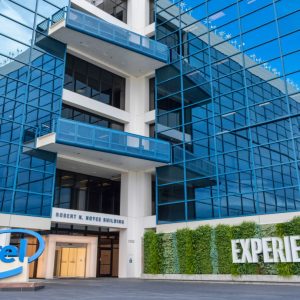Intending to build itself a larger international presence, Paris-based systems integration house of Steria SA says it will increase headcount by at least 1,000 during 1999. The arrival last year of its young and highly ambitious CEO Frantois Enaud, 39, saw the company set itself up for a second quarter 1999 IPO and put down an aggressive 2 billion franc turnover target by the year 2000. As well as showing organic growth Steria says it will be active in the M&A market following its flotation on the French Second Marche. The company showed only modest growth from 1995 to 1997. Revenues increased by a paltry 9% in this period, to FFr1,280m ($206m at 1997 rates) and profits declined from FFr18m (some $3.5m at 1995 rates) down to zero in the same period. Last year’s results, however, shows 25% revenue growth to FFr1,600m ($262.1m at 1998 rates). The improvement in Steria’s results can partly be put down to the re-emergence of France from recession. But the change in management saw the company retargeting a buoyant domestic market for facilities management services. As for the future, a principal part of company strategy is the flotation of Groupe Steria SCA, Steria’s holding company. This is to be handled by London-based HSBC and the French institution, Natexis. Groupe Steria is 75% owned by its employees and the remaining 25% by Credit Lyonnais, which is expected to use the IPO to sell its stake. An expected, 30% to 35% of Steria will be placed, although there has not been a valuation put on the company yet. However, if Steria’s planned flotation is compared to its French services rival, GFI, which raised $506m in July 1997, by floating just under 11% of its equity on the Second Marche, Steria could hope to raise an even larger war chest. The second arm of Steria’s strategy is international expansion. Non-domestic operations currently generate just 20% of Steria’s revenues mainly from business in Spain, Germany, Belgium, Switzerland and, from January this year, the UK. It has just opened offices in Bracknell, from where it will service existing projects with Bristol Airport, Cable & Wireless, Credit Lyonnais and PIA. The firm expects this percentage to increase to 30% of revenues over the next two years. Steria, however, has no plans to enter the US market. It lacks the financial muscle. Foreign acquisitions, using cash or stocks from the IPO, would be one way to expand internationally, and Steria’s UK spokesperson confirmed that post-IPO the company would be on the look-out for a UK services company with maybe 100 or 200 staff. The firm’s last purchase was in 1997 of the Spanish bank Sabadell’s IT subsidiary, Solbank Services, for an undisclosed sum. Steria provides three main services: business consultancy, 24% of revenues; systems integration, 51% of revenues; and facilities management and maintenance, 25% of revenues. The company expects growth in both the systems integration and consultancy divisions of 20% to 25% in 1999. A third strategic decision, to concentrate on facilities management, seems to be paying off with the division showing the fastest growth in the last year. Revenues increased by 29% to FFr450m ($73.7m at 1998 rates) in 1998 and are expected to show 30% growth in the next year. Within the FM division it is applications management that is the driver for Steria. It has 100 consultants skilled in all the main ERP suites to cater for what it considers to be strong emerging demand in Europe. Steria has 2,800 staff, up 1,000 in the last year, with an annual staff turnover of 15%. Although it expects to recruit a similar figure in 1999 it hopes to maintain its 75% billable staff percentage. Steria sells its services chiefly to banking and finance, 25% of revenues; telecoms, 20% of revenues; government and defense, 19% of revenues; power production, 18% of revenues; and transport, aeronautics and space, 18% of revenues. Within these industries Steria claims niche leadership in areas such as clearing systems for banks; credit card systems; specialist billing systems for telcos; and management information systems for passenger transportation sectors. Most of its blue chip clients, however, remain French, for example, car maker Renault, the BNP bank and state railway SNCF. It remains to be seen if Steria can gain a similar holding of overseas clients.
This article is part of ComputerWire’s European Computer Services information service. Some articles from the service are being provided to ComputerGram subscribers for a trial period only.






